You are using an out of date browser. It may not display this or other websites correctly.
You should upgrade or use an alternative browser.
You should upgrade or use an alternative browser.
Veterans...Get the hell in here now!
- Thread starter 6ohMax
- Start date
doublejj
Well-Known Member
View attachment 5114207
Air Force Tech. Sgt. Maurice Tooles, left, and Senior Airman Zamiyah Warner, both assigned to Air Force Mortuary Affairs Operations, prepare an American flag at Dover Air Force Base, Del., March 30, 2022. Airmen assigned to the team work to make sure each flag draped over a casket of a fallen service member is immaculate. Photo By: Jason Minto, Air Force

The Old Guard, in general, is known to have some of the highest standards of uniform discipline in the Army, as one of its most public-facing units. The regiment is the "official ceremonial unit and escort to the president, and it also provides security for Washington, D.C., in time of national emergency or civil disturbance," according to its website.
The Caisson Platoon conducts up to eight military funerals per day, depending on the season, according to a senior leader in the Old Guard.
Army report finds horses that carry the caskets of America's heroes live in 'unsatisfactory' conditions, after 2 die
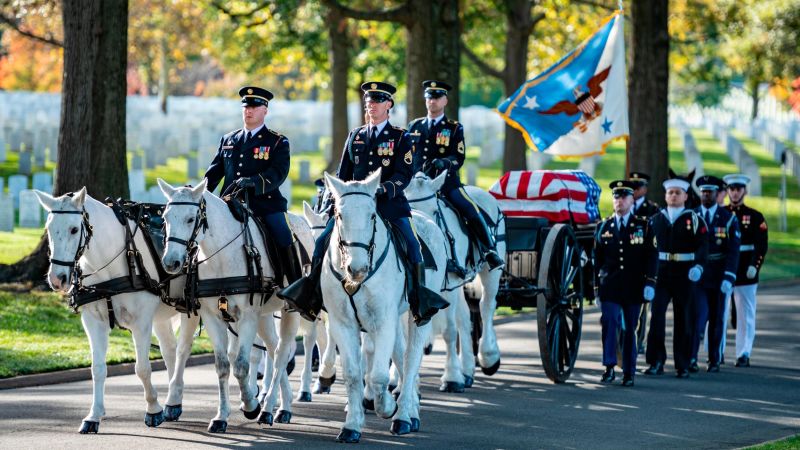
Army report finds horses that carry the caskets of America's heroes live in 'unsatisfactory' conditions, after 2 die | CNN Politics
The military horses that carry America's heroes to their final resting place in Arlington National Cemetery are living in unsanitary and potentially life-threatening conditions, according to a US Army report reviewed exclusively by CNN, consuming poor-quality feed, suffering from parasites and...
raratt
Well-Known Member
It's bolted in with 3 GBF bolts.
BarnBuster
Virtually Unknown Member
Wouldn’t you think there’s enough retired 2/3/4 Stars or even retired Intelligence with a Armored / Cavalry lineage that own spreads in McLean or Bethesda that could afford to send up some truckloads of decent hay or grain and pay for Vet visits every couple of months?View attachment 5114751
The Old Guard, in general, is known to have some of the highest standards of uniform discipline in the Army, as one of its most public-facing units. The regiment is the "official ceremonial unit and escort to the president, and it also provides security for Washington, D.C., in time of national emergency or civil disturbance," according to its website.
The Caisson Platoon conducts up to eight military funerals per day, depending on the season, according to a senior leader in the Old Guard.
Army report finds horses that carry the caskets of America's heroes live in 'unsatisfactory' conditions, after 2 die

Army report finds horses that carry the caskets of America's heroes live in 'unsatisfactory' conditions, after 2 die | CNN Politics
The military horses that carry America's heroes to their final resting place in Arlington National Cemetery are living in unsanitary and potentially life-threatening conditions, according to a US Army report reviewed exclusively by CNN, consuming poor-quality feed, suffering from parasites and...www.cnn.com
Last edited:
BarnBuster
Virtually Unknown Member
Today in Military History:
ON APRIL 8, 2009, four pirates armed with AK-47s clambered up the side of the U.S.-flagged container ship Maersk Alabama, sailing off the coast of Somalia. But after a brief scuffle with some of the 20 crewmembers, the pirates opted to abandon the 508-foot long ship, sailing off in one of its motorized lifeboats. They may not have captured the Maersk Alabama, nor looted its millions of dollars' worth of food and humanitarian aid bound for Kenya, but they didn't leave empty handed. The pirates had a captive: Maersk Alabama's captain, Richard Phillips.
Four days later, three of the four pirates were dead -- each from a single .30-caliber rifle bullet to his brain, courtesy of the U.S. Navy's SEAL Team Six. The fourth pirate, just 16 years old, was in Navy custody. And Phillips was on his way home, unharmed but for the psychological strain from four days in captivity in a sweltering lifeboat, unsure whether he would live or die. The fourth pirate, Abdul Wali Muse, who was already aboard the Bainbridge for medical treatment, was brought to the United States for trial. Muse was the first person charged with piracy in a US court in over 100 years. In May 2010, Muse pled guilty to hijacking, kidnapping and hostage-taking. In February 2011, Muse was sentenced to almost 34 years in federal prison.

 www.history.navy.mil
www.history.navy.mil
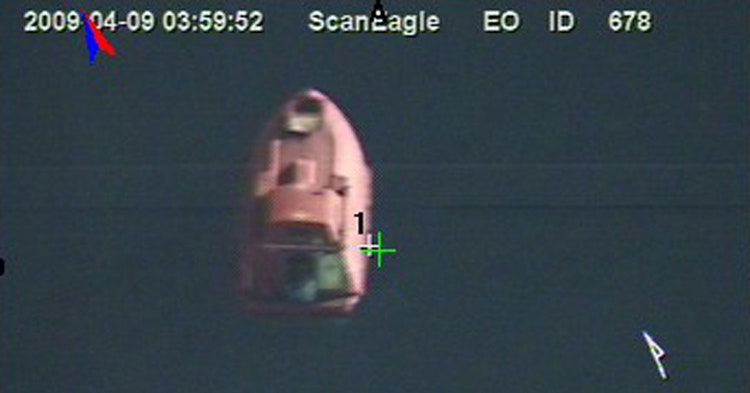
 www.wired.com
www.wired.com
ON APRIL 8, 2009, four pirates armed with AK-47s clambered up the side of the U.S.-flagged container ship Maersk Alabama, sailing off the coast of Somalia. But after a brief scuffle with some of the 20 crewmembers, the pirates opted to abandon the 508-foot long ship, sailing off in one of its motorized lifeboats. They may not have captured the Maersk Alabama, nor looted its millions of dollars' worth of food and humanitarian aid bound for Kenya, but they didn't leave empty handed. The pirates had a captive: Maersk Alabama's captain, Richard Phillips.
Four days later, three of the four pirates were dead -- each from a single .30-caliber rifle bullet to his brain, courtesy of the U.S. Navy's SEAL Team Six. The fourth pirate, just 16 years old, was in Navy custody. And Phillips was on his way home, unharmed but for the psychological strain from four days in captivity in a sweltering lifeboat, unsure whether he would live or die. The fourth pirate, Abdul Wali Muse, who was already aboard the Bainbridge for medical treatment, was brought to the United States for trial. Muse was the first person charged with piracy in a US court in over 100 years. In May 2010, Muse pled guilty to hijacking, kidnapping and hostage-taking. In February 2011, Muse was sentenced to almost 34 years in federal prison.

Pirate Interdiction and the U.S. Navy
Pirate interdiction and the U.S. Navy have a long history that goes all the way back to the early years of the nation when President Thomas Jefferson found himself involved in one of the first conflicts overseas known as the First Barbary War. Algerine (Barbary) pirates were attacking American...

8,000 Miles, 96 Hours, 3 Dead Pirates: Inside a Navy SEAL Rescue
A 2009 pirate standoff that could have ended in military disaster was instead resolved bloodlessly for the U.S., thanks in large part to a small team of far-flying, night-parachuting, tireless, sharpshooting Navy commandos. Their exploits would remain relatively obscure, if not for a retired...
BarnBuster
Virtually Unknown Member

Thomas Griffith, the nephew of Marine Corps Pvt. William E. Rambo, receives the American flag during his uncle's funeral at Arlington National Cemetery, Arlington, Virginia, April 4, 2022. In November 1943, Rambo was a member of Company H, 2nd Battalion, 8th Marine Regiment, 2nd Marine Division, Fleet Marine Force, and was killed in the Battle of Tarawa, Nov. 20. He was accounted for by DPAA on June 24, 2019.
+++++++++++++++++++++++++++++++++++++++++++++++++++++++++++++++++

Fern Sumpter Winbush, DPAA's Principal Deputy Director, presents a photo collage of Marine Cpl. Thomas H. Cooper's accounting to Cooper's daughter, Virginia Frogel. Cooper, 22, of Chattanooga, Tennessee, killed during World War II, was laid to rest at Arlington National Cemetery in Arlington, Virginia, March 10, 2022. Cooper was a member of Company A, 2nd Amphibious Tractor Battalion, 2nd Marine Division, Fleet Marine Force, and was killed in the Battle of Tarawa on Nov. 20, 1943.
BarnBuster
Virtually Unknown Member
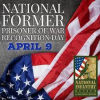
"Today is National Former Prisoner of War Recognition Day and is different and separate from National POW/MIA Recognition Day. It was officially designated by Congress in 1988, Public Law 100-269 [Sen J Res 253 100th Congress]. as a Presidentially-proclaimed observance and commemorates the April 9, 1942 surrender of approximately 10,000 United States military personnel and 65,000 Filipino soldiers on the Bataan Peninsula in the Philippines by Major General Edward P. King to the invading Imperial Japanese Army headed by General Masaharu Homma. Bataan was the largest mass surrender in United States military history. The surrender was followed immediately by the infamous Bataan Death March. Although this remembrance day is for all who were POWs, it is most associated with those who were POWs of Imperial Japan during WWII. The Philippine nation marks "Araw ng Kagitingan" (Day of Valor) on April 9 of every year to highlight the valor and heroism of the Filipino and American soldiers who fought in the Philippines during World War II."

BarnBuster
Virtually Unknown Member

"On April 9, 1942, Major General Edward P. King Jr. surrenders at Bataan, Philippines—against General Douglas MacArthur’s orders—and 78,000 troops (66,000 Filipinos and 12,000 Americans), the largest contingent of U.S. soldiers ever to surrender, are taken captive by the Japanese.
The prisoners were at once led 55 miles from Mariveles, on the southern end of the Bataan peninsula, to San Fernando, on what became known as the “Bataan Death March.” At least 600 Americans and 5,000 Filipinos died because of the extreme brutality of their captors, who starved, beat, and kicked them on the way; those who became too weak to walk were bayoneted. Those who survived were taken by rail from San Fernando to POW camps, where another 16,000 Filipinos and at least 1,000 Americans died from disease, mistreatment, and starvation. If an item “Made in Japan” was found in their possession, they were immediately executed. To the Japanese military for whom surrender was not an option, the captives, surrendered by their commander, were considered cowards (“dogs”).
After the war, the International Military Tribunal, established by MacArthur, tried Lieutenant General Homma Masaharu, commander of the Japanese invasion forces in the Philippines. He was held responsible for the death march, a war crime, and was executed by firing squad on April 3, 1946".

Surrender at Bataan Led to One of the Worst Atrocities in Modern Warfare
When the Battle of Bataan ended on April 9, 1942, about 12,000 Americans and 63,000 Filipinos became prisoners of war. What followed became known as the Bataan Death March—a brutal journey that left thousands dead.
What Price Surrender? The Court Martial of General Edward P. King
BarnBuster
Virtually Unknown Member
On this day, Confederate General Robert E. Lee agreed to surrender his Army of Northern Virginia, marking a symbolic end to the Civil War on April 9, 1865.
The overall Confederate surrender took place in stages over the following two months, with other Confederate armies reaching surrender agreements after Lee met with Union General Ulysses S. Grant at Appomattox Court House.
Lee’s troops had been besieged by Grant’s Union forces at Petersburg and Richmond for a 10-month period starting in June 1864. Lee used his considerable experience as a combat engineer to have his troops dig trenches to slow the Union advance. But on April 1, 1865, Union forces led by General Phillip Sheridan took a critical transportation link at Five Forks, and Grant broke through the Petersburg defenses the following day.
Lee and the Army of Northern Virginia withdrew to the southwest harried by Grant’s forces. On April 6, about a quarter of Lee's army surrendered after it was cut off from Lee and surrounded by Union forces. The next day, Lee and Grant started corresponding about a possible surrender of the rest of the Army of Northern Virginia.
Grant said it was “my duty to shift from myself the responsibility of any further effusion of blood by asking of you the surrender of that portion of the Confederate States army known as the Army of Northern Virginia.” Lee then asked about surrender terms.
The two military leaders agreed to meet under a truce at the home of Wilmer McLean in Appomattox on the afternoon of April 9. A sharply dressed Lee and Lieutenant Colonial Charles Marshall arrived first, followed by a slightly disheveled Grant and his officers, a group that included Robert Todd Lincoln.
The generals had met once before during the Mexican-American War, and they briefly chatted about the experience. Lee then asked Grant to write down the surrender terms, which allowed Lee’s officers to keep their sidearms and horses, and a similar provision was provided for Lee’s cavalry and artillery troops. All of Lee’s troops were to "be allowed to return to their homes, and not be disturbed by United States authority so long as they observe their paroles and the laws in force where they may reside." Grant also provided rations for the starved Confederate troops.
The generous surrender terms avoided potential trials of Confederate leaders and served as a blueprint for other surrenders that followed. After the papers were signed, Lee and Grant shook hands. After Lee mounted his horse, Grant and his officers saluted Lee, who returned the gesture. Approximately, 28,000 Confederate soldiers laid down their weapons over the next three days and returned home.
204,000 men, 110,100 Union soldiers and 94,000 Confederate soldiers, were killed in battle. Battlefield deaths only account for about one third of the total deaths during the Civil War, with 388,580 men perishing of disease. It has been estimated that one out of every four men who went to fight in the Civil War did not return home. For every man killed on the battlefield, there were typically around two wounded. Many soldiers who suffered wounds were often disabled or disfigured permanently. A typical procedure for dealing with shattered arms or legs was amputation, so many men came out of the war missing a limb or, perhaps, more. This had a dramatic impact upon their lives and the lives of their families.
Many men who experienced the horrors of the battlefield often came home with post-traumatic stress disorder. Since this condition was unknown at the time, treatments for those who suffered from it were limited. This meant that they had to struggle with painful memories of what they experienced in the war for the rest of their lives.

Civil War Cost & Conflict | How Much Did the Civil War Cost? - Video & Lesson Transcript | Study.com
Examine how much the American Civil War cost. Learn about the financial and human costs of the civil war and understand its cultural and economic...
BarnBuster
Virtually Unknown Member
Today in Military History:
On April 10, 1963, the USS Thresher, an atomic submarine, sinks in the Atlantic Ocean, killing the entire crew. One hundred and twenty-nine sailors and civilians were lost when the sub unexpectedly plunged to the sea floor roughly 300 miles off the coast of New England.
The Thresher was launched on July 9, 1960, from Portsmouth Naval Yard in New Hampshire. Built with new technology, it was the first submarine assembled as part of a new class that could run more quietly and dive deeper than any that had come before.
On April 10, 1963, at just before 8 a.m., the Thresher was conducting drills off the coast of Cape Cod. At 9:13 a.m., the USS Skylark, another ship participating in the drills, received a communication from the Thresher that the sub was experiencing minor problems.
Other attempted communications failed and, only five minutes later, sonar images showed the Thresher breaking apart as it fell to the bottom of the sea. Sixteen officers, 96 sailors and 17 civilians were on board. All were killed.
On April 12, President John F. Kennedy ordered that flags across the country be flown at half-staff to commemorate the lives lost in this disaster. A subsequent investigation revealed that a leak in a silver-brazed joint in the engine room had caused a short circuit in critical electrical systems. The problems quickly spread, making the equipment needed to bring the Thresher to the surface inoperable.
The disaster forced improvements in the design and quality control of submarines. Twenty-five years later, in 1988, Vice Admiral Bruce DeMars, the Navy’s chief submarine officer, said “The loss of Thresher initiated fundamental changes in the way we do business—changes in design, construction, inspections, safety checks, tests, and more. We have not forgotten the lessons learned. It’s a much safer submarine force today.”
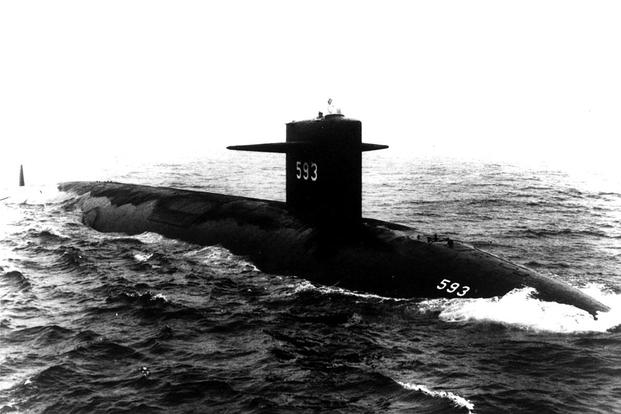
 www.military.com
www.military.com
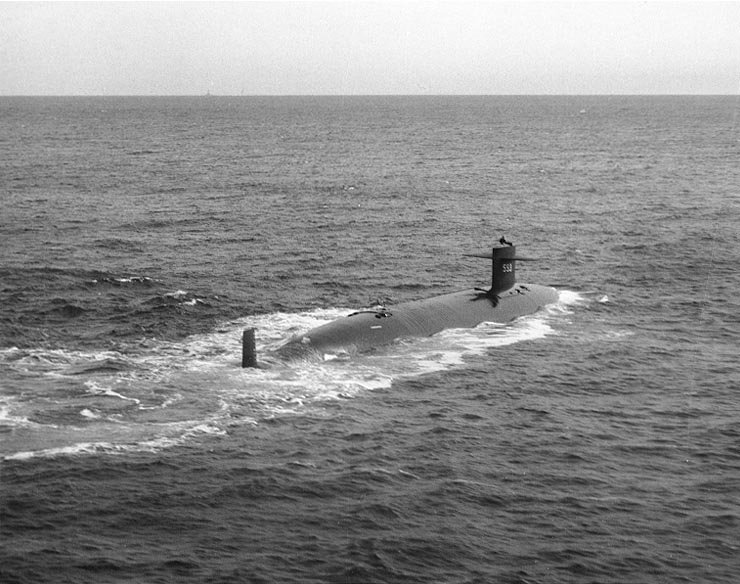
 en.wikipedia.org
en.wikipedia.org
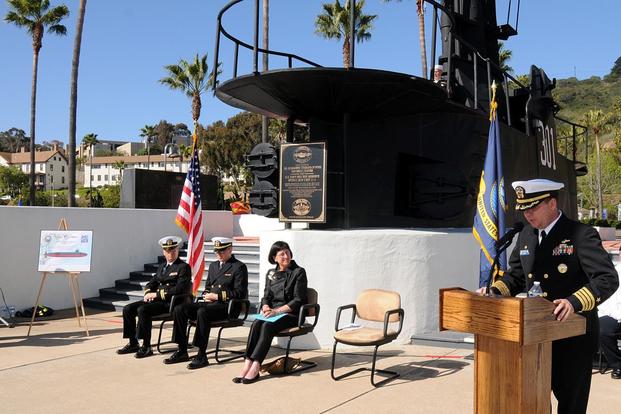
 www.military.com
www.military.com
On April 10, 1963, the USS Thresher, an atomic submarine, sinks in the Atlantic Ocean, killing the entire crew. One hundred and twenty-nine sailors and civilians were lost when the sub unexpectedly plunged to the sea floor roughly 300 miles off the coast of New England.
The Thresher was launched on July 9, 1960, from Portsmouth Naval Yard in New Hampshire. Built with new technology, it was the first submarine assembled as part of a new class that could run more quietly and dive deeper than any that had come before.
On April 10, 1963, at just before 8 a.m., the Thresher was conducting drills off the coast of Cape Cod. At 9:13 a.m., the USS Skylark, another ship participating in the drills, received a communication from the Thresher that the sub was experiencing minor problems.
Other attempted communications failed and, only five minutes later, sonar images showed the Thresher breaking apart as it fell to the bottom of the sea. Sixteen officers, 96 sailors and 17 civilians were on board. All were killed.
On April 12, President John F. Kennedy ordered that flags across the country be flown at half-staff to commemorate the lives lost in this disaster. A subsequent investigation revealed that a leak in a silver-brazed joint in the engine room had caused a short circuit in critical electrical systems. The problems quickly spread, making the equipment needed to bring the Thresher to the surface inoperable.
The disaster forced improvements in the design and quality control of submarines. Twenty-five years later, in 1988, Vice Admiral Bruce DeMars, the Navy’s chief submarine officer, said “The loss of Thresher initiated fundamental changes in the way we do business—changes in design, construction, inspections, safety checks, tests, and more. We have not forgotten the lessons learned. It’s a much safer submarine force today.”

55 Years After Thresher Disaster, Navy Still Keeps Secrets on Sub Loss
The doomed submarine's hull imploded at a depth of 2,400 feet with a force of about 22,000 pounds of TNT.

USS Thresher (SSN-593) - Wikipedia

Questions About Infamous Lost Sub Resurface as Navy Releases New Documents Tied to Decades-Old Mystery
The Thresher sank with 129 men aboard.
BarnBuster
Virtually Unknown Member
China's military has US aircraft carriers in its sights, but those flattops aren't 'little teacups,' their captains say
China will be gunning for US aircraft carriers, but those flattops are "designed to take it," Capt. Paul Campagna said.
BarnBuster
Virtually Unknown Member
Today in Military History:
The first U.S. Air Service aerial victories by fighter planes in the American sector in France were by Lts. Alan Winslow and Douglas Campbell, two pilots of the 94th Aero Squadron, which had just been transferred to the front.
On Sunday morning, 14 April 1918, they were on alert at Gengoult Aerodrome near Toul, France. German planes were reported in the area and the two U.S. pilots, completely inexperienced in aerial combat, took off in their Nieuport 28s. Almost immediately they saw two German aircraft and attacked them directly over the flying field at less than 1,000 feet altitude, in full view of not only the Americans at Gengoult Aerodrome but also the French citizens of Toul. Winslow shot down an Albatross D.V and a minute later Campbell destroyed a Pfalz D.III. They were both back on the ground in a matter of minutes. This initial fighter combat by the U.S. Air Service, although probably successful due as much to luck as skill, convinced the French people that the Americans were "super-human."
On 31 May 1918, Campbell became the first U.S.-trained pilot to receive official credit for his fifth victory, thus becoming an ace. Winslow was decorated for a later action but was shot down on 31 July, lost an arm and spent the remainder of the war as a POW.
The first U.S. Air Service aerial victories by fighter planes in the American sector in France were by Lts. Alan Winslow and Douglas Campbell, two pilots of the 94th Aero Squadron, which had just been transferred to the front.
On Sunday morning, 14 April 1918, they were on alert at Gengoult Aerodrome near Toul, France. German planes were reported in the area and the two U.S. pilots, completely inexperienced in aerial combat, took off in their Nieuport 28s. Almost immediately they saw two German aircraft and attacked them directly over the flying field at less than 1,000 feet altitude, in full view of not only the Americans at Gengoult Aerodrome but also the French citizens of Toul. Winslow shot down an Albatross D.V and a minute later Campbell destroyed a Pfalz D.III. They were both back on the ground in a matter of minutes. This initial fighter combat by the U.S. Air Service, although probably successful due as much to luck as skill, convinced the French people that the Americans were "super-human."
On 31 May 1918, Campbell became the first U.S.-trained pilot to receive official credit for his fifth victory, thus becoming an ace. Winslow was decorated for a later action but was shot down on 31 July, lost an arm and spent the remainder of the war as a POW.
BarnBuster
Virtually Unknown Member

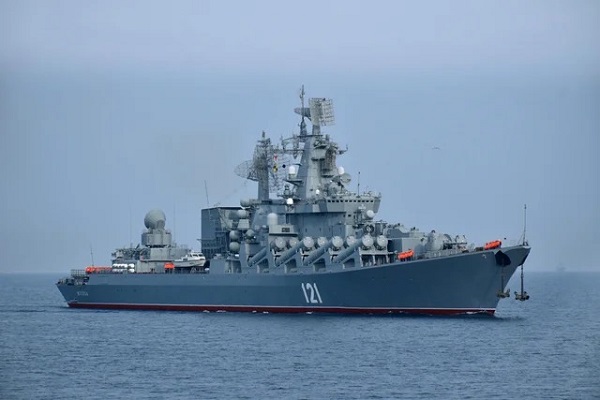
Russian Cruiser Damaged - Flagship of the Black Sea Fleet | SOF News
The Moskva, a cruiser that served as the flagship of the Black Sea, was severely damaged and abandoned on Thursday, April 14, 2022.
 sof.news
sof.news
BarnBuster
Virtually Unknown Member
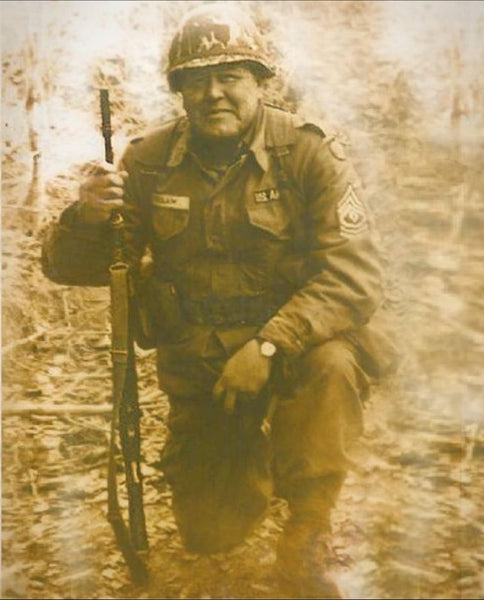
Most decorated Native American soldier in US history, FOUR Silver Stars, Three Wars
Pascal Cleatus Poolaw, Sr., the most decorated Native American soldier in US history4 Silver Stars5 Bronze Stars3 Purple HeartsHe earned a total of 42 medals and citations.Born on January 29, 1922, in Apache, Oklahoma, Poolaw, a full-blooded Kiowa, served with the United States Army in World War...
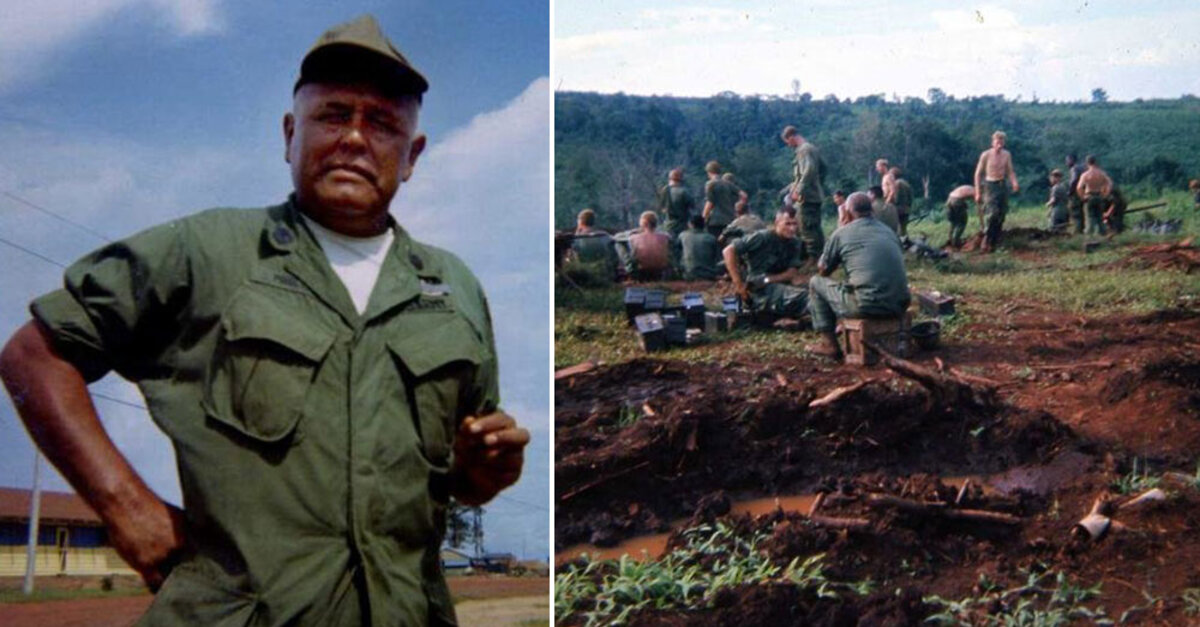
The Epic Story Of Pascal Cleatus Poolow, Sr. Spans 20 Years Of Battle, And 42 Medals
He fought in three wars to save his sons, his men, and his country.
BarnBuster
Virtually Unknown Member
"Commissioned in 1943, 'The Sullivans' is one of four remaining examples of the Fletcher-class destroyer left in the world, according to the park. The ship measures 376 feet long and was crewed by 310 sailors. Named after five brothers who died during the battle of Guadalcanal, the destroyer left Pearl Harbor in 1944 and served in the Pacific for the remainder of World War II. According to the U.S. Navy, The Sullivans bombarded airfields on Iwo Jima, defended against Japanese air attacks, searched for submarines, rescued American sailors and Japanese merchant seaman, and supported the invasion of Okinawa."
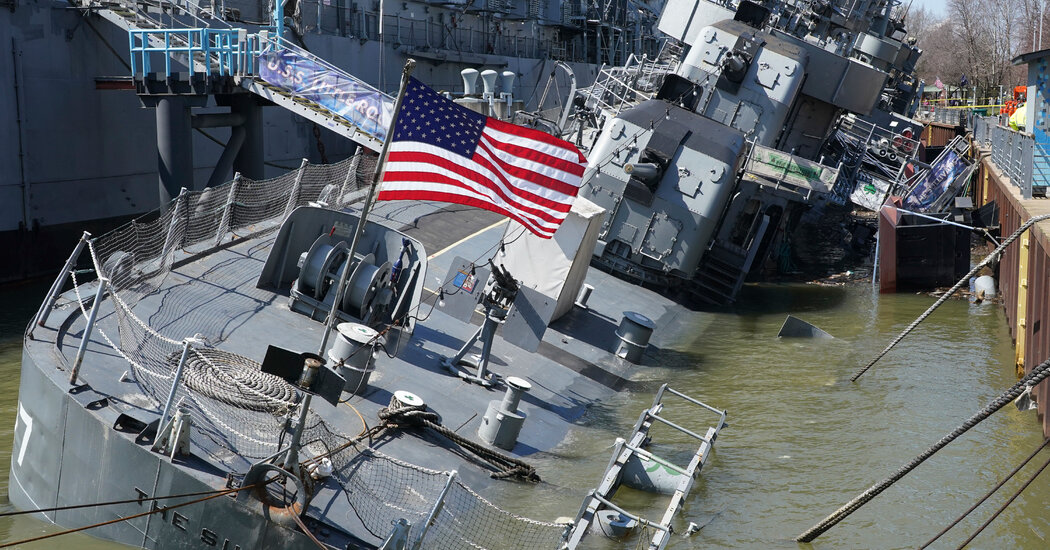
 www.nytimes.com
www.nytimes.com
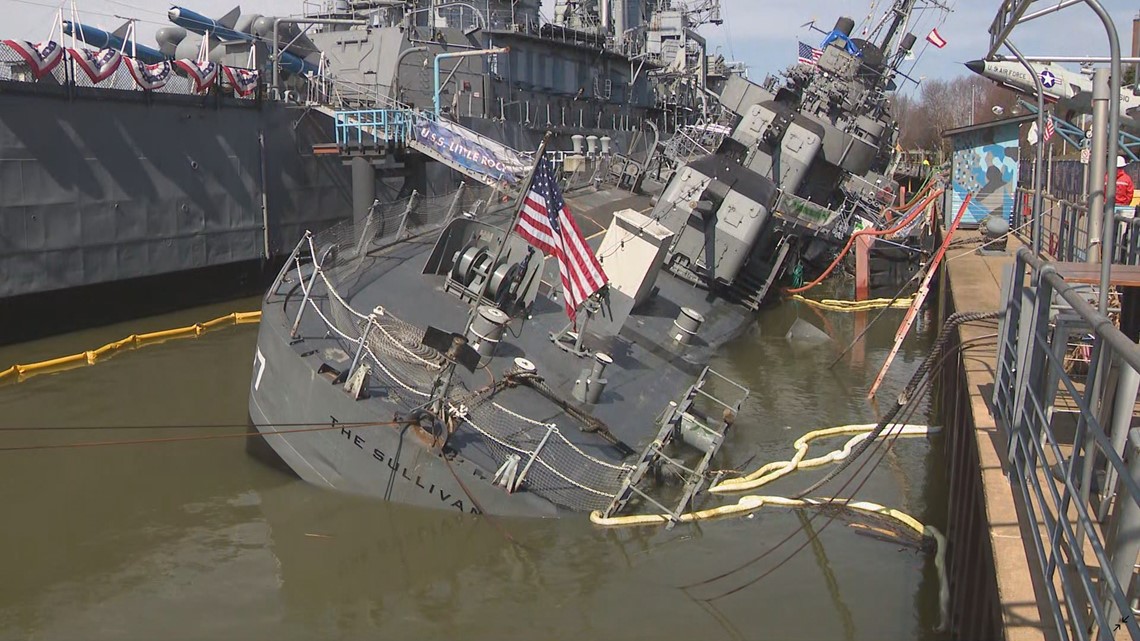
 www.wgrz.com
www.wgrz.com
 savethesullivans.org
savethesullivans.org

World War II Navy Ship Is Tilting Into the Buffalo Waterfront
The U.S.S. The Sullivans, which survived combat in the Pacific, suffered a hull breach this week at a naval park in Buffalo. “We have a problem and we don’t know what it is,” a park official said.

Crews working around the clock to save USS The Sullivans
"We have made the mantra that we're not going to give up the ship and failure is not an option," said Paul Marzello, president and CEO of the Naval and Military Park
Save The Sullivans – We Stick Together
BarnBuster
Virtually Unknown Member
Today in Military History:
On April 18, 1942, 16 American B-25 bombers, launched from the aircraft carrier USS Hornet 650 miles east of Japan and commanded by Lieutenant Colonel James H. Doolittle, attack the Japanese mainland.
The now-famous Tokyo Raid did little real damage to Japan (wartime Premier Hideki Tojo was inspecting military bases during the raid; one B-25 came so close, Tojo could see the pilot, though the American bomber never fired a shot)–but it did hurt the Japanese government’s prestige. Believing the air raid had been launched from Midway Island, approval was given to Admiral Isoroku Yamamoto’s plans for an attack on Midway–which would also damage Japanese “prestige.” Doolittle eventually received the Medal of Honor.
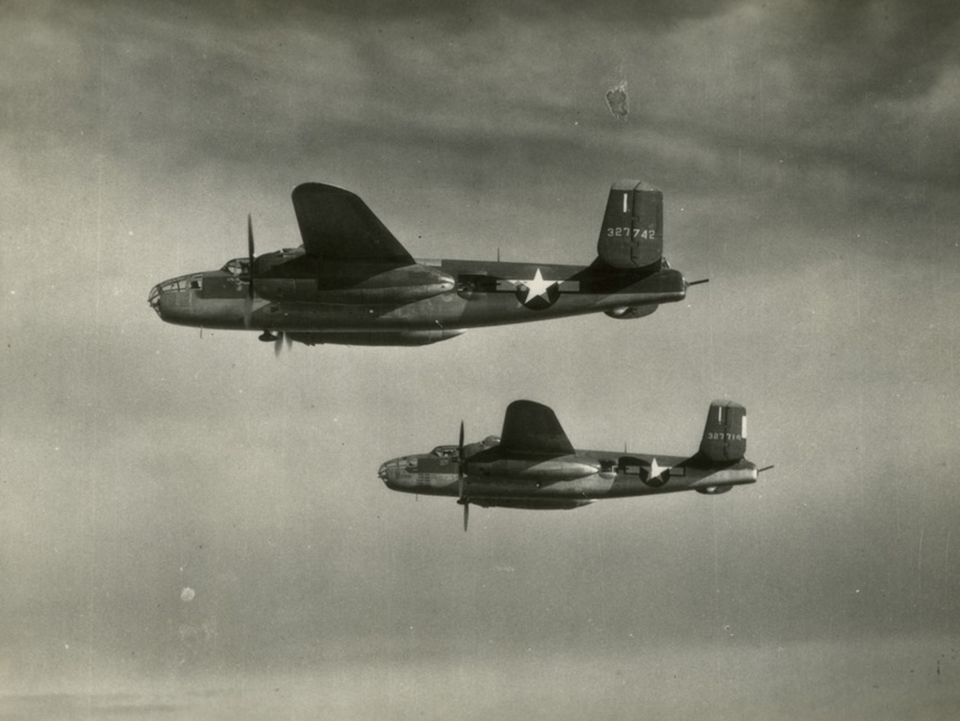
 www.nationalww2museum.org
www.nationalww2museum.org
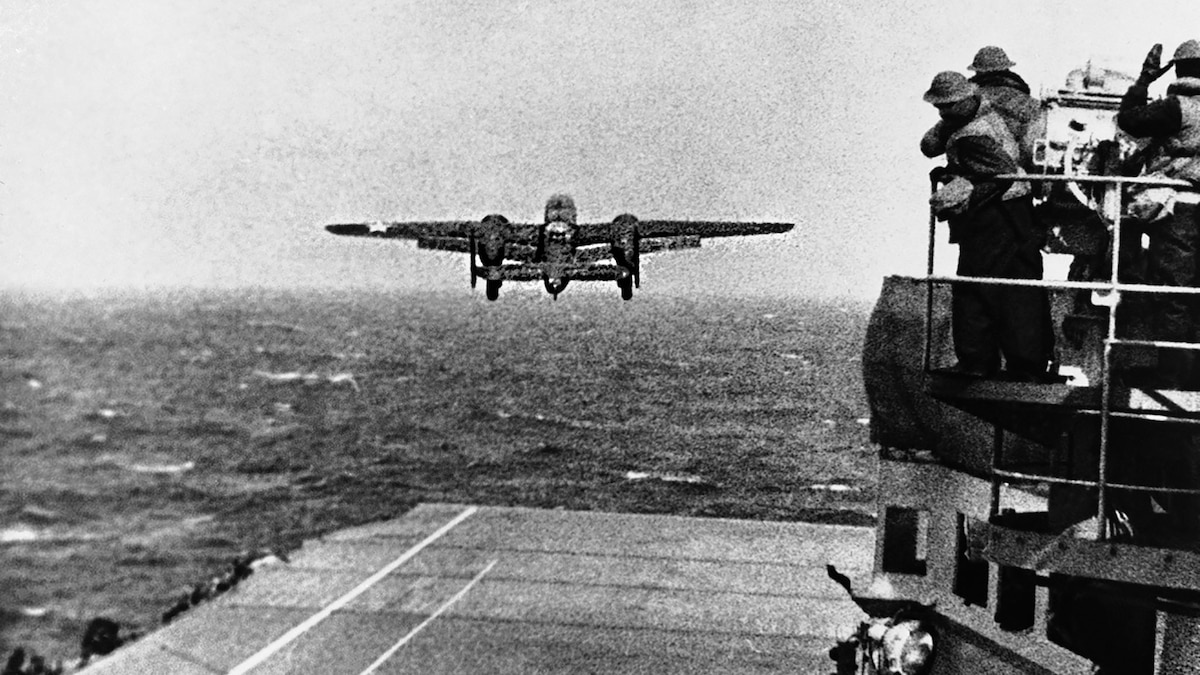
 www.nationalgeographic.com
www.nationalgeographic.com
Mission Accomplished
America Strikes Back
April 18, 1943 – An aircraft carrying the Commander of the Japanese Combined Fleet, Admiral Yamamoto, is shot down by P-38 Lighting fighters over Bougainville. Yamamoto is killed. This action is the result the interception of a coded Japanese message announcing a visit by Yamamoto. The Japanese fail to deduce that their codes are insecure.
The Bougainville jungle was so thick, and Yamamoto’s crash site so remote, that Japanese search planes could only circle overhead, vainly seeking any sign of survivors. A rescue party finally hacked through to the downed Betty the next day. The admiral’s body was found near the wreckage, belted upright in his seat and still holding his sword, leading some to believe he survived the crash and might have been saved. More likely his body was arranged by another dying victim, in a demonstration of the reverence his countrymen felt toward him. Tokyo did not admit his loss until May 21.
In all of American history, the only equivalent is the operation that killed al Qaeda mastermind Osama bin Laden. Yamamoto was no different from any officer caught in a sniper’s crosshairs—in uniform, on a combat mission, a legitimate military target. Today, when the enemy rarely wears a uniform, the debate centers on targeting terrorist leaders with remote-controlled drones. Few remember that the precedent was set 70 years ago, over the jungles of Bougainville
Search Killing Yamamoto
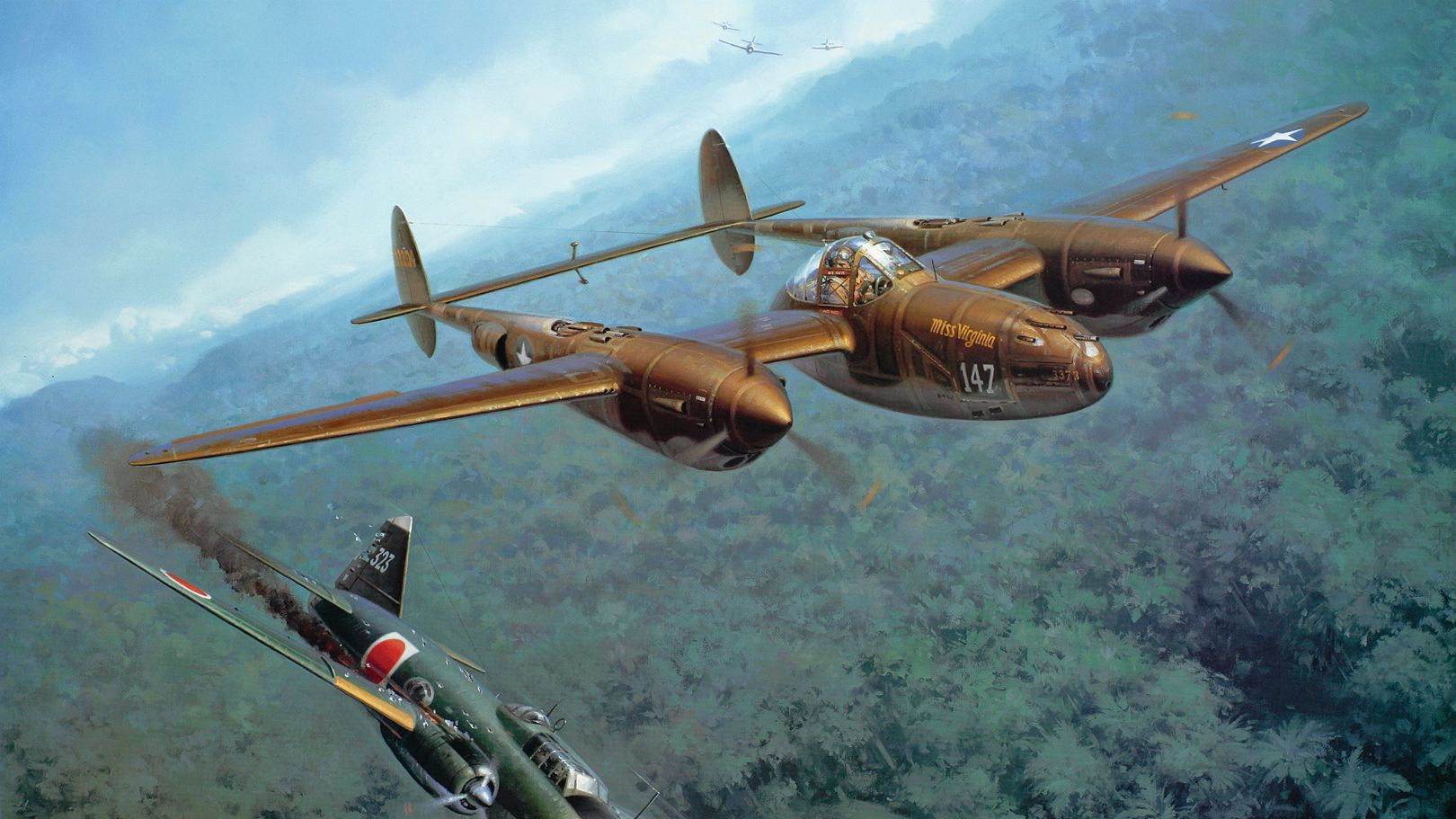
 warfarehistorynetwork.com
warfarehistorynetwork.com
 www.airforcemag.com
www.airforcemag.com
On April 18, 1942, 16 American B-25 bombers, launched from the aircraft carrier USS Hornet 650 miles east of Japan and commanded by Lieutenant Colonel James H. Doolittle, attack the Japanese mainland.
The now-famous Tokyo Raid did little real damage to Japan (wartime Premier Hideki Tojo was inspecting military bases during the raid; one B-25 came so close, Tojo could see the pilot, though the American bomber never fired a shot)–but it did hurt the Japanese government’s prestige. Believing the air raid had been launched from Midway Island, approval was given to Admiral Isoroku Yamamoto’s plans for an attack on Midway–which would also damage Japanese “prestige.” Doolittle eventually received the Medal of Honor.

Doolittle's Raider: The North American B-25 Mitchell
The first bomber to hit Japan after Pearl Harbor, the B-25 Mitchell was found in every theater of the war and was a rugged, multipurpose bomber beloved by her aircrew for its survivability and ease to fly.

Trained in Secret, These Fearless Pilots Retaliated for Pearl Harbor
On April 18, 1942, Jimmy Doolittle led a squadron on one of the most daring missions of World War II.
Mission Accomplished
America Strikes Back
*****************************************************************************************************


April 18, 1943 – An aircraft carrying the Commander of the Japanese Combined Fleet, Admiral Yamamoto, is shot down by P-38 Lighting fighters over Bougainville. Yamamoto is killed. This action is the result the interception of a coded Japanese message announcing a visit by Yamamoto. The Japanese fail to deduce that their codes are insecure.
The Bougainville jungle was so thick, and Yamamoto’s crash site so remote, that Japanese search planes could only circle overhead, vainly seeking any sign of survivors. A rescue party finally hacked through to the downed Betty the next day. The admiral’s body was found near the wreckage, belted upright in his seat and still holding his sword, leading some to believe he survived the crash and might have been saved. More likely his body was arranged by another dying victim, in a demonstration of the reverence his countrymen felt toward him. Tokyo did not admit his loss until May 21.
In all of American history, the only equivalent is the operation that killed al Qaeda mastermind Osama bin Laden. Yamamoto was no different from any officer caught in a sniper’s crosshairs—in uniform, on a combat mission, a legitimate military target. Today, when the enemy rarely wears a uniform, the debate centers on targeting terrorist leaders with remote-controlled drones. Few remember that the precedent was set 70 years ago, over the jungles of Bougainville
Search Killing Yamamoto

A P-38 Pilot Describes the Attack on Admiral Isoroku Yamamoto
P-38 pilot Roger Ames flew with the mission to shoot down Isoroku Yamamoto, the architect of the Pearl Harbor attack.
Magic and Lightning | Air & Space Forces Magazine
For US pilots, Adm. Isoroku Yamamoto was a “high-value” target but also a fleeting one.
Last edited:
BarnBuster
Virtually Unknown Member
Today in Military History:
On April 19, 1943, Himmler sent in SS forces and their collaborators with tanks and heavy artillery to liquidate the Warsaw ghetto.
In Warsaw, Poland, Nazi forces attempting to clear out the city’s Jewish ghetto are met by gunfire from Jewish resistance fighters, and the Warsaw Ghetto Uprising begins.
Shortly after the German occupation of Poland began, the Nazis forced the city’s Jewish citizens into a “ghetto” surrounded by barbwire and armed SS guards. The Warsaw ghetto occupied an area of less than two square miles but soon held almost 500,000 Jews in deplorable conditions. Disease and starvation killed thousands every month, and beginning in July 1942, 6,000 Jews per day were transferred to the Treblinka concentration camp. Although the Nazis assured the remaining Jews that their relatives and friends were being sent to work camps, word soon reached the ghetto that deportation to the camp meant extermination. An underground resistance group was established in the ghetto—the Jewish Combat Organization (ZOB)—and limited arms were acquired at great cost.
On January 18, 1943, when the Nazis entered the ghetto to prepare a group for transfer, a ZOB unit ambushed them. Fighting lasted for several days, and a number of Germans soldiers were killed before they withdrew. On April 19, Nazi leader Heinrich Himmler announced that the ghetto was to be emptied of its residents in honor of Hitler’s birthday the following day, and more than 1,000 S.S. soldiers entered the confines with tanks and heavy artillery. Although many of the ghetto’s remaining 60,000 Jewish dwellers attempted to hide themselves in secret bunkers, more than 1,000 ZOB members met the Germans with gunfire and homemade bombs. Suffering moderate casualties, the Germans initially withdrew but soon returned, and on April 24 launched an all-out attack against the Warsaw Jews.
Thousands were slaughtered as the Germans systematically progressed down the ghettos, blowing up the buildings one by one. The ZOB took to the sewers to continue the fight, but on May 8 their command bunker fell to the Germans and their resistant leaders died by suicide. By May 16, the ghetto was firmly under Nazi control, and mass deportation of the last Warsaw Jews to Treblinka began. During the uprising, some 300 German soldiers were killed, and thousands of Warsaw Jews were massacred. Virtually all those who survived the Uprising to reach Treblinka were dead by the end of the war.
An estimated 7,000 Jews perished during the Warsaw ghetto uprising, while nearly 50,000 others who survived were sent to extermination or labor camps. It’s believed that the Germans lost several hundred men in the uprising.
The Warsaw ghetto uprising was the largest, symbolically most important Jewish uprising, and the first urban uprising, in German-occupied Europe. The resistance in Warsaw inspired other uprisings in ghettos (e.g., Bialystok and Minsk) and killing centers (Treblinka and Sobibor).
On April 19, 1943, Himmler sent in SS forces and their collaborators with tanks and heavy artillery to liquidate the Warsaw ghetto.
In Warsaw, Poland, Nazi forces attempting to clear out the city’s Jewish ghetto are met by gunfire from Jewish resistance fighters, and the Warsaw Ghetto Uprising begins.
Shortly after the German occupation of Poland began, the Nazis forced the city’s Jewish citizens into a “ghetto” surrounded by barbwire and armed SS guards. The Warsaw ghetto occupied an area of less than two square miles but soon held almost 500,000 Jews in deplorable conditions. Disease and starvation killed thousands every month, and beginning in July 1942, 6,000 Jews per day were transferred to the Treblinka concentration camp. Although the Nazis assured the remaining Jews that their relatives and friends were being sent to work camps, word soon reached the ghetto that deportation to the camp meant extermination. An underground resistance group was established in the ghetto—the Jewish Combat Organization (ZOB)—and limited arms were acquired at great cost.
On January 18, 1943, when the Nazis entered the ghetto to prepare a group for transfer, a ZOB unit ambushed them. Fighting lasted for several days, and a number of Germans soldiers were killed before they withdrew. On April 19, Nazi leader Heinrich Himmler announced that the ghetto was to be emptied of its residents in honor of Hitler’s birthday the following day, and more than 1,000 S.S. soldiers entered the confines with tanks and heavy artillery. Although many of the ghetto’s remaining 60,000 Jewish dwellers attempted to hide themselves in secret bunkers, more than 1,000 ZOB members met the Germans with gunfire and homemade bombs. Suffering moderate casualties, the Germans initially withdrew but soon returned, and on April 24 launched an all-out attack against the Warsaw Jews.
Thousands were slaughtered as the Germans systematically progressed down the ghettos, blowing up the buildings one by one. The ZOB took to the sewers to continue the fight, but on May 8 their command bunker fell to the Germans and their resistant leaders died by suicide. By May 16, the ghetto was firmly under Nazi control, and mass deportation of the last Warsaw Jews to Treblinka began. During the uprising, some 300 German soldiers were killed, and thousands of Warsaw Jews were massacred. Virtually all those who survived the Uprising to reach Treblinka were dead by the end of the war.
An estimated 7,000 Jews perished during the Warsaw ghetto uprising, while nearly 50,000 others who survived were sent to extermination or labor camps. It’s believed that the Germans lost several hundred men in the uprising.
The Warsaw ghetto uprising was the largest, symbolically most important Jewish uprising, and the first urban uprising, in German-occupied Europe. The resistance in Warsaw inspired other uprisings in ghettos (e.g., Bialystok and Minsk) and killing centers (Treblinka and Sobibor).
Similar threads
- Replies
- 10
- Views
- 1K
- Replies
- 8
- Views
- 916
- Replies
- 33
- Views
- 3K












